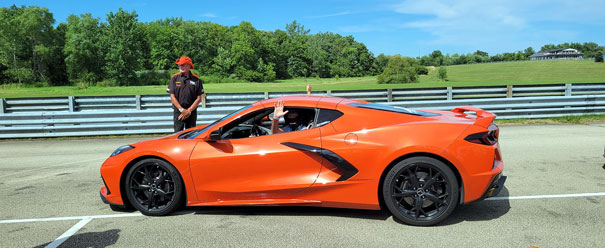
What We Use
11
We join spokes together in a wheel,
but it is the center hole
that makes the wagon move.
We shape clay into a pot,
but it is the emptiness inside
that holds whatever we want.
We hammer wood for a house,
but it is the inner space
that makes it livable.
We work with being,
but non-being is what we use.
Tao Te Ching by Lao Tsu, trans. by Stephen Mitchell
Yesterday a friend made mention in a post of my visit to the Autobahn Country Club. I took a ZO6 Corvette for four laps around the track with a veteran driver in the passenger seat.
The brief mention caused me to reflect that the wooden wheeled-cart is the ancestor of the 670 horsepower ZO6 Chevrolet Corvette. The Corvette has a near indescribable, seductive eye appeal to a car buff. And yet the lineage of the two-seater track tuned super-car goes back to that basic tool of conveyance: the animal drawn wooden wagon used until early in the last century.
The verse quoted above underscores a fruitful distinction between the empty hub of a wheel, upon which the usefulness of a wagon depends, and the wagon itself. A technology for generations of our ancestors was the wheelwright’s mastery, woodworking and the iron-working ability to construct a spoked wheel. The round empty hub was key to a functional wagon, adequate to convey produce to the market, then to return with supplies for day to day living. Utility = absence.
Spokes converging to a hub, and twin banks of eight cylinders.
So there I sat, tightly belted, in driver’s seat with a helmet on my head. The vehicle inside and out was a sleek, track-purposed, aerodynamic machine. Functionality of the vehicle depends upon eight round and empty cylinders, enough absence for precise amounts of fuel and air. This escapes notice though – as the eye is fascinated by finish and form. The ear is enchanted by the muffled rumble of exhaust behind the firewall at my back. Still nothing less than a certain emptiness, the “nothingness” of eight round cylinders is support for the track function of the Corvette. It’s inner space, an incontrovertible hidden emptiness, an “absence” that precedes, that is the pivot point of track utility of the super-car.
Wagon to Corvette, yet non-being, emptiness endures.